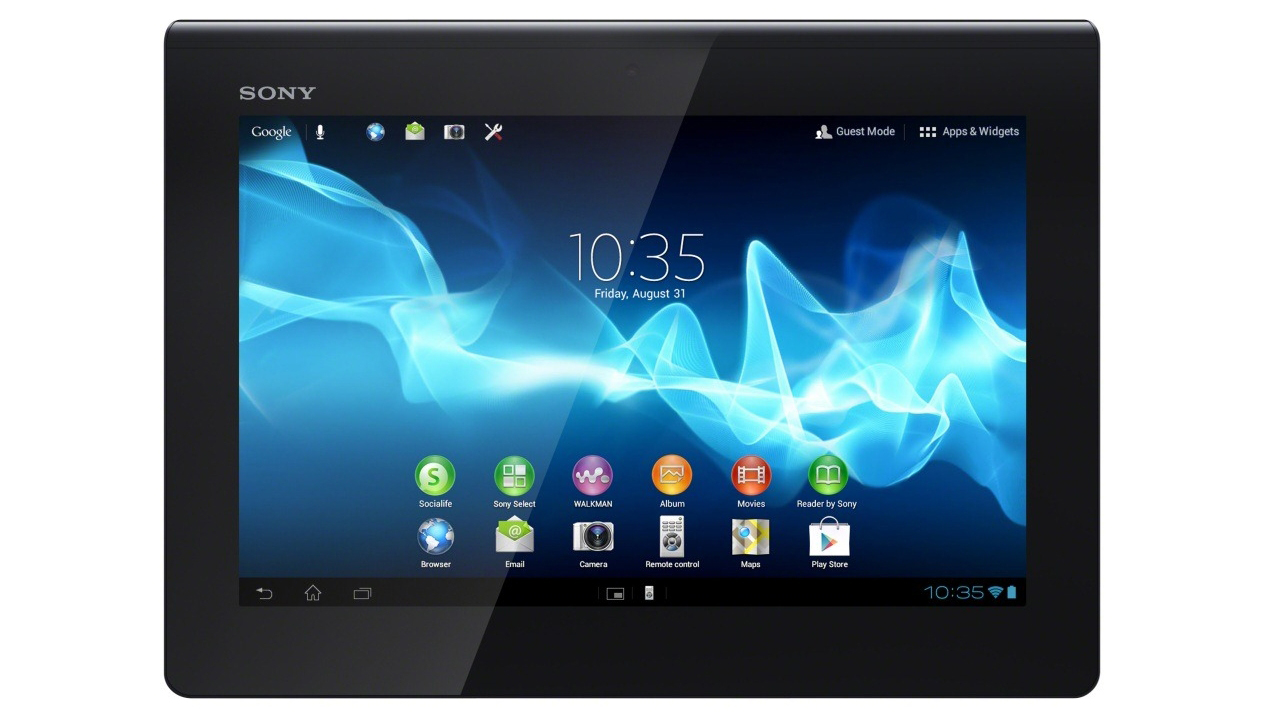Why you can trust TechRadar
The Sony Xperia Tablet S does so many things right but many other things wrong. As a portable music player it's almost unrivalled, it's pretty good for video too in a lot of ways, but the poor screen resolution holds it back from being brilliant.
The build quality is great; it's got a powerful 1.3GHz quad-core processor and the inclusion of an SD card slot helps set it apart from the iPad 4 and the Nexus range. But the battery life is terrible and the camera is glitchy, plus it's a bit of a disappointment even when it does work.
All in all it's a tablet of two halves, and some of its missteps are forgivable given the fairly reasonable price tag of £329/AU$539/US$399.99 for the 16GB Wi-Fi version. But others are harder to overlook.
We liked
The music playing capabilities of the Sony Xperia Tablet S are enormously impressive. With multiple players included, good speakers, xLOUD technology to further increase the volume, a built-in equaliser, expandable storage and free cloud storage thanks to Play Music, it really is one of the best tablets there is for music.
The good speakers, expandable storage and xLOUD technology also make video fairly good, while the powerful processor ensures it's generally a very smooth performer. The build quality is among the best you'll find in Android land, though still beaten by most Apple products.
The mini-apps that Sony has included are a great idea too, and they're something you won't currently see on any other manufacturers' tablets.
We disliked
The battery is far and away the biggest problem with the Sony Xperia Tablet S. For music it's not too bad, but for video, gaming or even just web browsing it drains pretty quickly. We're not sure what Sony was thinking putting such a small battery in a high powered, large screened device, since ultimately it's just not up to scratch.
The screen is lower resolution than we'd like. It's not terrible, but neither is it as good as many similarly priced tablets. The Google Nexus 10 and iPad 4 are known for their screen quality, but even the iPad mini, which was somewhat lambasted for its resolution, has slightly more pixels-per-inch.
Moving away from pixels, the Sony Xperia Tablet S also doesn't have a very impressive contrast, with colours often being a little muted. The camera was worryingly glitchy and not brilliant in any case. This isn't such an issue because the camera isn't a big selling point of tablets, but it's still a shame.
Final verdict
It's unfortunate for Sony that it was unable to properly launch the Sony Xperia Tablet S back in September as it had intended. Back then it wouldn't have been compared to the Google Nexus 10 or the iPad 4, and we would have looked on it more favourably as a result. But it really struggles against this recent competition.
It's not a bad tablet by any means, in fact for certain users - those who plan to use it heavily for music in particular - it's still well worth considering. The expandable storage and mini-apps also help set it apart from many of its main competitors, and if you want a premium build quality but don't want to buy Apple, then, again, the Sony Xperia Tablet S is well worth a look.
The screen isn't quite as good as we'd like, but it's far from terrible. It's running a slightly dated version of Android and the camera is a little glitchy, but none of these are huge problems. The main issue is the battery, which just can't be overlooked, whatever you plan to use the tablet for. You'll be charging it a lot.
If you can live with that then this is a powerful, versatile tablet with a lot of storage, optional 3G in the UK, a great build quality, some inspired software and a competitive price tag. We just wouldn't blame you if the battery was a deal breaker.
The Sony Xperia Tablet S is a few tweaks away from competing with the best. It does so much right, but a few too many things wrong.
James is a freelance phones, tablets and wearables writer and sub-editor at TechRadar. He has a love for everything ‘smart’, from watches to lights, and can often be found arguing with AI assistants or drowning in the latest apps. James also contributes to 3G.co.uk, 4G.co.uk and 5G.co.uk and has written for T3, Digital Camera World, Clarity Media and others, with work on the web, in print and on TV.
